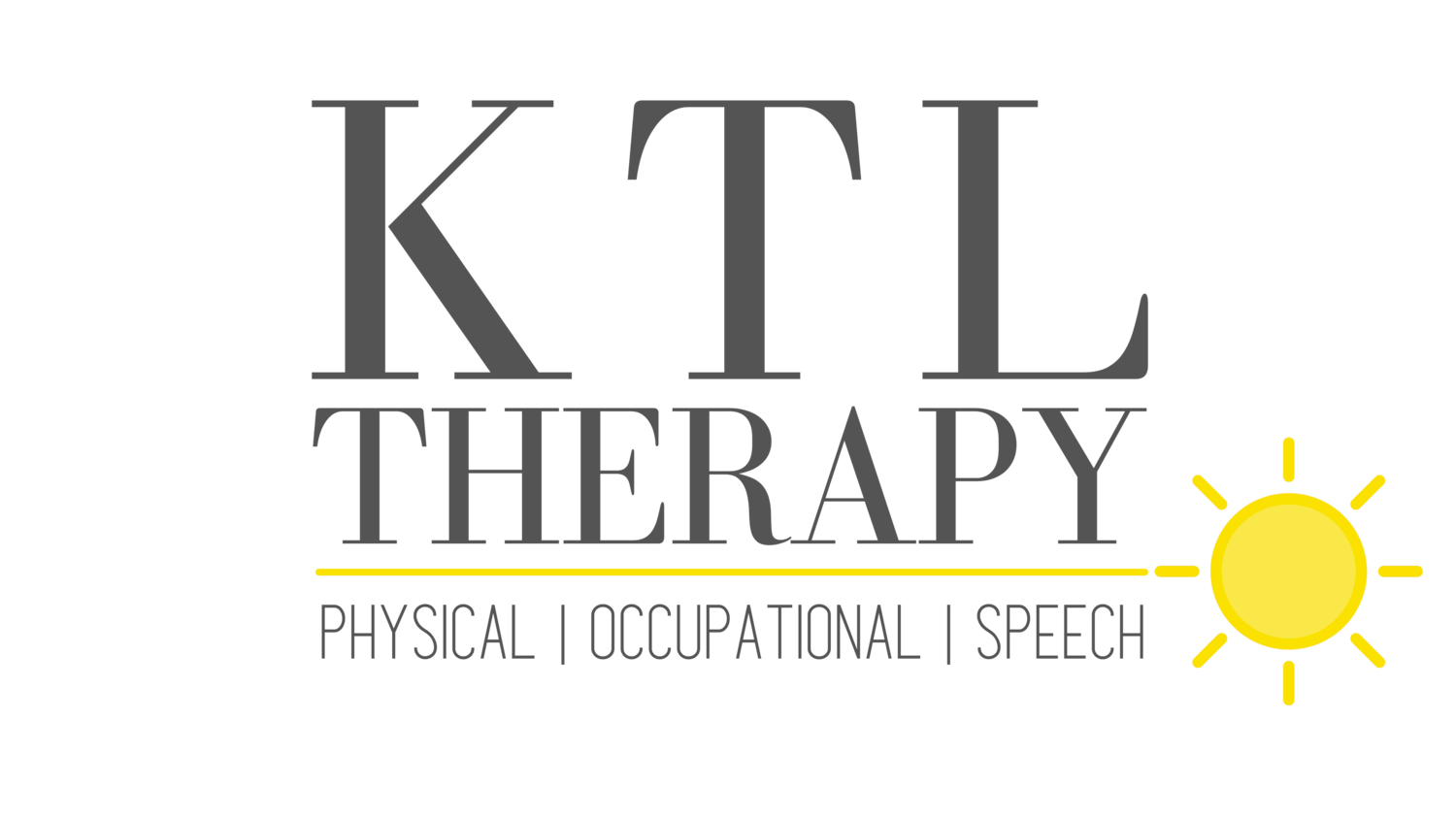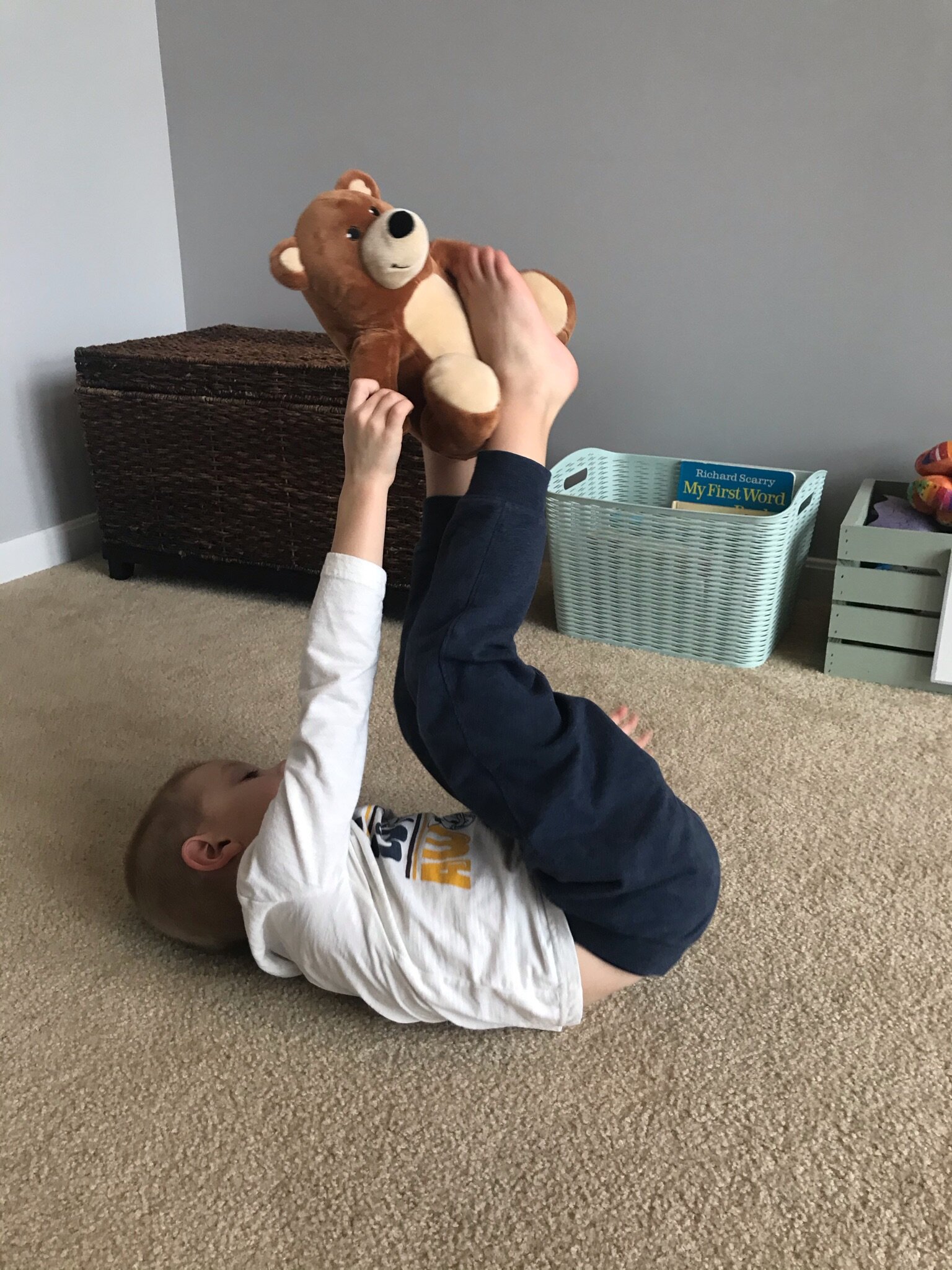7 Core Strengthening Exercises for Children
Does your child struggle to sit upright in a chair for an extended period of time?
Do you feel like your child gets tired more easily or loses their balance more often than other children when participating in physical activities?
Has it been a challenge for your child to learn new motor skills, like crawling, jumping, throwing a ball, or even holding a crayon?
If this sounds like your child, you may have been told that he or she has a “weak core.” What does this really mean and how do we work on this with young children?
What is “Core Strength?”
Many of us think having a “strong core” means having six-pack abs (and doing 1,000 crunches to get there). But core strength is much more than having six-pack abdominal muscles, and the development of a strong core should really start in infancy and childhood. The “core” of the body includes the muscles of the abdomen, spine, and pelvis (or in kid language--your belly, your back, and your booty!).
A strong core serves as the foundation for the rest of your body as it moves throughout the day. Whether your child is running and climbing at the playground or sitting in a chair coloring a picture, their core is acting as a stable base as they complete these skills. Children should begin gaining core strength in infancy with tummy time, rolling over, sitting and crawling. As they continue to develop, the strength of their core will help them achieve independence with more advanced milestones like walking, running, sitting in a chair, jumping, and throwing a ball.
Signs of a “Weak Core”
If your child has weak core muscles, you might notice the following signs:
Fatigues easily during physical activity (i.e., playing outside/at the playground, participating in gym class)
Difficulty sitting in a seat for an extended period of time (may appear to be an issue with attention)
Poor posture in sitting (slouched shoulders, need to prop themselves up on the table)
Poor balance when standing or moving
Needs to lean on a parent or other stable surface when standing for prolonged periods
Difficulty with crawling or rolling (as an infant, toddler, or even into childhood)
Prefers to W-sit (legs turned inward) or lie down when playing on the floor
Avoids climbing activities (e.g., ladders/rock walls at the playground or even stairs)
Delays in gross motor or fine motor skill development
Complaints of pain in back, legs, or even feet with physical activity
7 Core Exercises to Try with you Child
Follow the guide below to begin introducing core strengthening activities into your child’s routine. To make sure your child is activating their core correctly, give them verbal reminders to squeeze their belly and make sure their back stays straight. Sometimes if you “tickle” their belly, this will show them how to properly activate their core muscles.
These exercises may be very challenging, so it is best to pick only 1 or 2 activities to start and to follow the recommended modifications as needed. Start with only 2-3 repetitions and build up to 10 repetitions as able. Try to make these activities as fun as possible and give plenty of rest time to prevent fatigue and frustration. It will take time to build your child’s core strength, so find what works and be consistent! Add additional activities as able.
**Note: Listed activities are best for children ages 4 and up (and can follow 1-2 step directions)
#1 V-UP
Have your child lie on their back with their legs up in the air. Place a stuffed animal between their feet and have them attempt to reach up and grab it with their hands. Repeat as able.
Modification: Have your child focus only on holding the stuffed animal between their feet for a few seconds; increase time as able.
#2 BRIDGE
Have your child lie on their back with their knees bent and feet planted on the floor. Have them squeeze their bottom and lift it up into the air. Hold for 2-3 seconds and repeat as able. Try driving a toy car under their bottom to make it more fun.
Modification: Have your child focus only on squeezing their bottom without lifting it into the air. You can also hold their hips and help them lift their bottom only an inch off the ground and work toward lifting it all the way up.
#3 SUPERMAN/SUPERWOMAN
Have your child lie on their belly on the floor. Encourage them to fly like superman by lifting their head, arms, and legs off the floor for 3-5 seconds. Repeat as able.
Make it more fun by having a competition with a parent/sibling OR have them reach for a stuffed animal. You can also try this on a large platform swing or exercise ball.
Modification: Place a pillow under your child’s chest and focus on lifting only the head and arms a few inches off the ground first. Add in leg lift as able. Hold for only 1 second to start and increase hold time as able.
#4 TALL KNEELING
Have your child kneel on the floor with their bottom lifted off their feet. Their hips, knees, and shoulders should be in line. Have them throw a ball or stuffed animal overhead to you or another target (i.e., block tower or bucket) without losing their balance. Repeat as able.
Modification: Focus on just holding this tall kneeling position with a ball or stuffed animal above their head---see if they can beat their time with every repetition. If this is still too hard, have them hold the tall kneeling position at the coffee table while they work on a puzzle so that they can lean on the support surface as needed.
#5 ANIMAL WALKS
Practice crawling like a bear (pictured), crab walking, or crawling on hands and knees like a dog across the living room floor. You can make this more fun by having your child complete a puzzle doing animal walks---place the puzzle pieces on one side of the room with the puzzle board on the opposite side of the room.
Modification: Decrease the distance they have to travel OR just focus on holding the position without moving across the room. If bear crawling or crab walking are too challenging, focus just on a simple hands and knees crawling motion. Try to make a tunnel with your legs or with chairs and blankets to make it more motivating.
#6 WHEELBARROW
Hold your child’s feet and have them “wheelbarrow walk” across the room on their hands. You can include the whole family and have races OR have your child complete a puzzle in this position (as mentioned above with animal walks).
Modification: Focus just on a crawling motion if the wheelbarrow position is too challenging. You will also want to start with just a crawling position if you notice your child’s elbows hyperextending (bending in the “wrong” direction) in a wheelbarrow position.
#7 SQUATS
Place puzzle pieces on the floor and have your child squat down to pick them up. Encourage them to bend at their hips and knees with their toes pointed straight ahead. Their back should not be rounded. Repeat as able.
Modification: If your child tends to just bend at the waist or round their back, have them practice sitting down and then standing back up from a low chair/stool.
Other Considerations
If your child does not do well with structured activities, it is best to set up an environment that will encourage the use of the core muscles during unstructured play. If you are indoors, try setting up ramps with couch cushions to encourage climbing or set up tunnels using chairs/blankets to encourage crawling.
You can even try crawling up the stairs with supervision. If you are able to get to a playground, try climbing ladders/obstacles or swinging with assistance. Swimming, hiking, or just running around in the backyard are also great ways to activate the muscles of the core.
If your child struggles significantly with any of these activities (or seems very delayed with their motor skills in general), it is best to discuss these concerns with your pediatrician. They will likely refer you to a physical or occupational therapist who can further assess your child’s core strength and recommend more individualized activities to try at home.
Have questions or concerns? Get in touch with one of our therapists!









